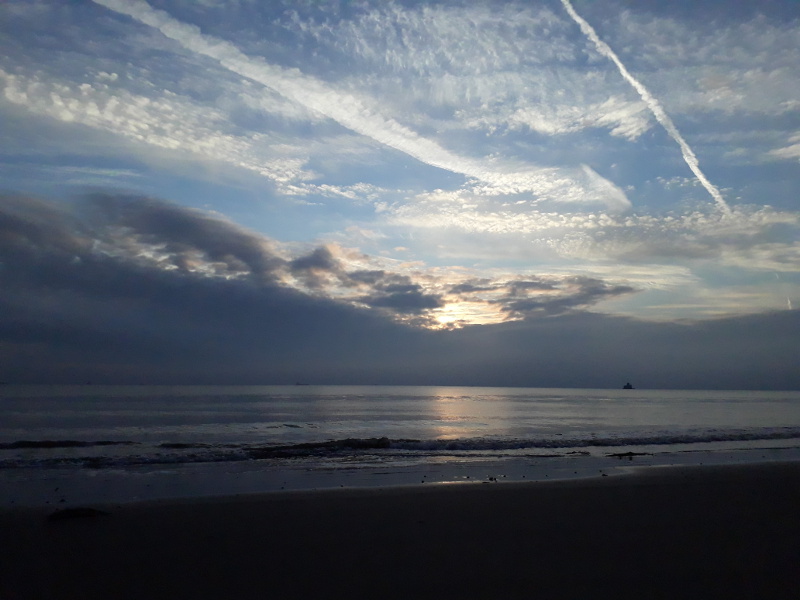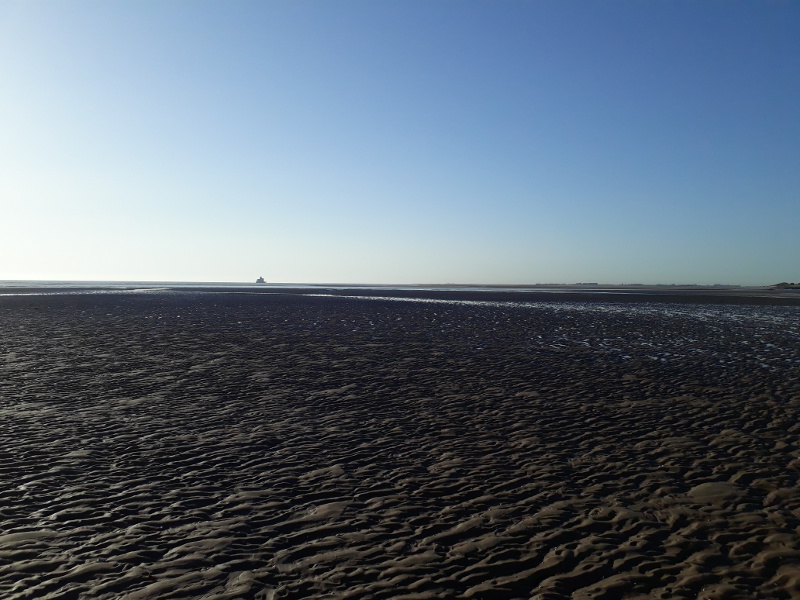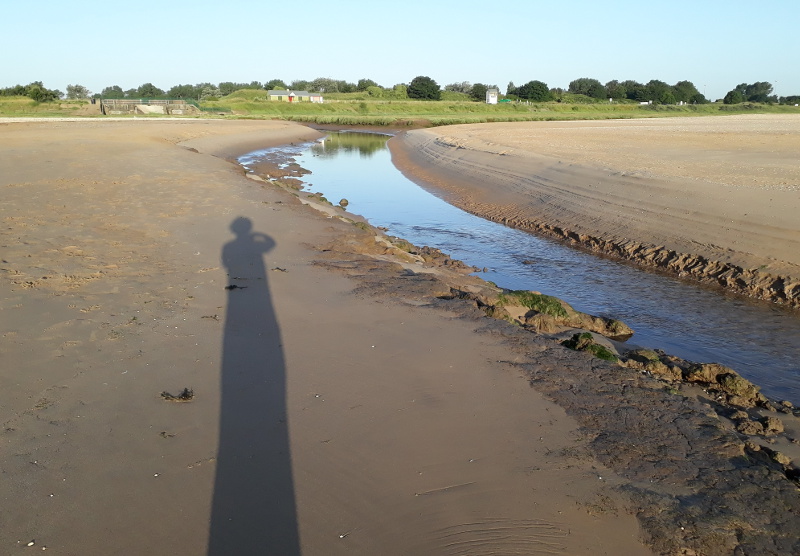On Cleethorpes Beach (part one)
Or, some walks in the early morning
Since changing jobs, I’ve been going for early morning walks most workdays. For about an hour or so, I’ve been walking up to the woods overlooking the village, or following the riverbank and canalbank, or walking across the fields to the next village and back. It’s a really good way to start the day. When I go to visit The Mother, though: well, there aren’t really any interesting places to walk and back in an hour. There aren’t actually very many public footpaths outside the village itself; there’s no river, and the woods are too far away. I was at a bit of a loss.
“Why don’t you drive down to the beach and go for a walk there?” suggested The Cute Accountant.* It made complete sense. The beach is only 15 minutes drive away from The Mother’s house; I could easily stretch my morning walk to be 90 minutes without really having to rush. So, since starting the new job, when I’ve been at The Mother’s every morning I have gone down to the beach for a walk on the sand.

Cleethorpes Prom is your fairly standard seaside prom: pier, arcades, amusement rides and chip shops. All the signs of seaside civilisation, with the sand raked daily and the high concrete wall of the prom separating town and sea. If you head a couple of miles south, though, down past the leisure centre and the miniature railway to where the holiday parks start, then things feel much more remote. A broad band of salt marsh separates the dry land from the open water, and you can wander along the tideline or through the marshes feeling completely apart from the world, feeling as if it is some ancient unpopulated coastline. Look the other way, though, and behind the freewheeling seabirds, you can see the lighthouse on the far side of the river mouth, and always ship after ship standing at anchor and waiting for their upstream pilot.

At low tide, there is a vast expanse of rippled sand and mud, cut across by channels and with endless slight variations in height. When I was a kid, the dangers of the beach were always drummed into me heavily. Never go out too far. Never cross one of the channels. You’ll get cut off. The Mother would tell me lurid stories from her days as a 999 operator, of people finding bodies washed up on the shore after going out at low tide and getting confused by fast-descending fog. “The most dangerous beach in the country,” she’d said, which I’m not sure is the truth. Nevertheless, you have to be careful going down to the low tide line, always sure all the water you see is flowing out, not back behind you. If you do go all the way, you find the remains of shipwrecks, the gaunt ribcages of old wooden ships sticking stumpily out of the sand.

Navigating all the way along the tideline, without heading back to the nearest concrete path, can be tricky. The outflow of one of the local becks cuts across the sand, in a surprisingly deep channel. At low tide it can be crossed with care, if you can find a shallow spot, if you don’t mind getting your feet a little wet and having to jump over the deeper parts. At higher tides, you have no chance, and have to find a way to cut back through the marshes, themselves riddled with deep, steep-sided channels of water with thick mud at the bottom. It’s far too easy to slip over at their edge and end up with a very wet and muddy arse. I hate to think what the marshes are like to navigate at the very highest tides: I suspect I’d have to sit on the thin line of dunes at the seaward edge of the marsh and wait the tide out a few hours. It wouldn’t be much of a hardship.

I could keep on here posting photos of the wilder parts of the beach, much as I could sit for hours on the dunes listening to the waves breaking. I’m going to pause this post here, though, before coming back again soon with more pictures and more to say. Think of it as the tide going out and returning again.

* For the really long-term readers: it’s career progression.

 Home
Home